A lot of ink has been applied in telling the story of the start of stock car racing, and how bootleggers were the first to test their cars against each other – especially in North Georgia.
It comes as no surprise that many of the early drivers started their careers hauling illegal hooch through the mountains and the foothills around the area. It also comes as no surprise that those drivers gravitated over to automobile racing.
If you lost a race on a race track, you came back next week and tried again. If you lost a race against a revenue agent, you went to jail.
But to narrow it down some more, while you can find the beginnings of modern stock car racing in the mountains, you can find the roots right in Hall County, Georgia.
With the county seat of Gainesville situated about an hour north of Atlanta, you can find several elements of the early days of the sport in and around the area. Some can still be seen, while others are buried under the clay or the waters of Lake Lanier.
Gainesville Fairgrounds
Before the stock cars thundered around the area, Pete Craig of Gainesville was racing – and winning – in open wheel cars on Daytona Beach in the early ‘30s. A 1937 issue of Life magazine features a driver named George Moore of Gainesville racing and wrecking at Atlanta’s Lakewood Speedway in an open wheel race.
Prior to World War II, the only oval track racing in the North there was virtually no circle track racing in North Georgia outside of the Atlanta based tracks like Lakewood and the short lived Atlanta Speedway. There were a few fairgrounds races held at Cartersville and Rome in the very early years.
There were very few horse tracks in the area and that is what was used first in automobile racing as some tracks went back to the 19th century. In Hall County, there was not even a horse track. While there may have been some tracks on farms for friendly horse racing, it wasn’t until 1941 that a group met to establish the Northeast Georgia Fair Association. There existed small fairs in some towns but these were for a certain town such as Gainesville, which had the annual Gainesville Fair. These people were thinking bigger. They encompassed 18 counties of Northeast Georgia.
The property they bought for the fairgrounds was called the Mincey Farm, located on Shallowford Road just beyond the intersection on Pearl Nix Parkway. At the time of the purchase (1941) this land was outside the city limits – that was how small Gainesville was at the time. There was enough acreage for buildings and a ½-mile dirt oval for horse racing. They held a fair and it was a roaring success - but then World War II broke out and everything was put on hold.
After the war, restrictions were loosened and people were looking for things to do. Three area businessmen - Max Looper, Gober Sosebee and Frank Pirkle - formed a partnership to have automobile racing at the Northeast Georgia Fairgrounds.
Looper was the promoter, while future Georgia Racing Hall of Fame inductee Sosebee was in charge of getting the drivers. Pirkle, who was in the tire business in Gainesville and was a longtime supporter of local pioneer racer Bobbie Whitmire, was in charge of the concessions.
Whitmire has lauded Pirkle’s abilities as a businessman. Pirkle knew where every penny, nickel and dime was and exactly how much money could be made. The trio’s racing venture at the fairgrounds was very successful.
Perhaps the most successful story to come out of the automobile racing at the Gainesville Fairgrounds came at a race that was set to feature Georgia Racing Hall of Famers Roy Hall from Dawsonville and Ed Samples from Atlanta. There was only one problem – Hall was in jail.
His cousin and car owner – and one of the most influential people in early stock car racing – Raymond Parks struck a deal with a local sheriff. On the day of the race, Hall was a brought to the speedway in the back of a patrol car, in handcuffs and leg irons. After being uncuffed and put in the race car, he went out and blistered the field to score the win.
Minutes after the victory lane ceremony, he was cuffed, put back in the patrol car and taken back to jail. All in front of the adoring crowd.
Racing at the fairgrounds continued for a couple of races there until citizens gathered together eliminate automobile racing at the fairgrounds. The excuse was that the community wanted to curb the dust and the noise from the events. Even in those days, this excuse was used to stop racing, which was not held on Sundays, but rather on Saturdays and holidays.
Part of this cause of the fuss was due to the location of the fairgrounds. It sat less than a mile away from the square in downtown, next to the Alta Vista Cemetery. Swallow Ford Road ran off Browns Bridge Road at the Alta Vista Cemetery years ago before they enlarged the cemetery and took in part of the public roads.
Looper/Gainesville Speedway
Looper, Sosebee and Pirkle were upset by their ouster, so they purchased a piece of property on US 129 towards Cleveland (called the Cleveland Highway at the time) and built another dirt track. It never saw horse racing but a lot of horsepower.
The Looper Speedway opened in 1948, with Sosebee winning the first race. Not much is known about those early events, as the local paper was not a big supporter of activities run on Sunday afternoon.
As the story goes, Looper got religion and stayed away from his old buddies, which meant he closed down his operation of the track. In 1952 “Doc” Stow (a local radio personality and said to be quite a prankster) and some businessmen refurbished the track and added concrete grandstands, with the Willis Sand Company doing the work. That replaced the original wooden stands that cascaded down the natural hill to the track. This made for excellent viewing of the entire ½-mile oval, now renamed the Gainesville Speedway.
Over five seasons, from 1952 to 1956, every kind of stock car race event was held at the speedway, including strictly stock, modified, sportsman and jalopy. In general, each class had its day as the officials did not mix the classes.
The winners included several Georgia Racing Hall of Famer inductees, such as Gober Sosebee, Roscoe Thompson, Jack Smith, Chester Barron of Cornelia and Gainesville’s own Bud Lunsford. Lunsford actually ran the second race of his illustrious career at the Gainesville Speedway, having raced in his first the night before at Canton.
In 1956, they started advertising drag races at Gainesville Speedway. It was a dirt drag strip that hosted mostly street vehicles. Whitmire has said the location can best be described as at the top of the hill behind the grandstands, roughly where the ball fields are today at Laurel Park. The starting line was near the grandstands, with the cars racing out towards the highway.
On one occasion, Whitmire and Lunsford raced their stock cars on the drag strip, with Lunsford scoring his first winning trophy.
Lake Lanier claimed Gainesville Speedway at the end of 1956, but the top of the grandstands can still be seen when the lake level drops about 12 feet. The lake was not an overnight affair as the project started in 1949. They even had trouble filling the lake as towns below Gainesville used the river for water supply – mainly DeKalb and Fulton Counties.
Hall County Speedway
In late 1956, it was obvious that Hall County was going to be without a race track. There were a lot of race cars out of Hall County as well as car loads of fans who were facing having to travel to compete or to see racing.
But two men decided to build their own track rather than go all the way to Banks County or Toccoa to race. Following a meeting of area competitors at the famed Steakhouse in Cornelia, Georgia, June Robinson and Ray Cooper set out to do just that. They used a piece of property that Robinson owned near the Chestnut Mountain community on Georgia Highway 211 (the old Winder Highway) to construct a small 3/8–mile dirt oval. It would be named the Hall County Speedway, and would feature the same types of cars as the old Gainesville Speedway and at other nearby tracks.
Whitmire remembers Billy Fryar, brother to Georgia Racing Hall of Fame inductees Harold and Freddy Fryar, winning the first feature at the Hall County Speedway.
Gainesville Airport Raceway
Meanwhile, as the dirt tracks in the area were flourishing, a new type of auto racing was about to be launched in North Georgia – one that continues to this day.
The Gainesville Jaycees brought road racing to Gainesville, hosting sports car races with the SCCA at what is now known as the Lee Gilmer Memorial Airport.
At the time, the airport was only used for non-commercial flights. From 1956 through 1959, one weekend a year was taken for the races, with the exception of 1957, when they ran two races. The races were discontinued after the airport’s traffic was ramped up and the Jaycees put their money in the Northeast Georgia Fairgrounds. According to a Jaycee member at the time, the fair gave them more money with less effort.
The races were fun but time consuming. It was the ever spirited “Bear” Newton who said he had spent all day at the library in Atlanta seeking the Cherokee word for sports car racing and found it to be “Enoche.”
The Atlanta Chapter of the SCCA (Sports Car Club of America) was the sanctioning and officiating body for the Enoche races. Ed Martin of the Columbus, Georgia Martin Theater family bought a Ferrari and made short work of the feature races.
Gainesville Speedway (The Second One)
For over two decades, Gainesville’s own Bud Lunsford raced not only in Hall County but throughout North Georgia. He won so many races that when drivers found a new venue, no one talked about it in fear Lunsford would come and take over.
One case in point is the second Gainesville Speedway, which was built by Billy Smith of Cumming, Georgia and Vernon Hudgens in 1965. It was in no means a fancy affair. Considered a 1/3-mile dirt oval, they constantly had problems with dust. Until the early to mid-sixties, all tracks worked their dirt with massive amounts of water to keep the dust down to a small storm. With the advent of true racing tires designed to dig up the surface to push the racers down the track at faster speeds, dust became more of a problem and the selection of a good piece of property was first on the list with new tracks.
That was not the case at this new track. Even with running in the evening hours, the dust became an eyesore. The speedway, which ran modifieds and jalopies, only lasted a couple of seasons. They actually discontinued modified races due to Lunsford dominating the races. According to Hudgens, they only wanted to spread their money around on advice of their CPA as the Forsyth County Speedway one county over was making a bundle of money.
Road Atlanta
In the late sixties, big time racing came to Hall County.
A group of businessmen from the Atlanta area, David Sloyer, Earl Walker, and Arthur Montgomery, wanted to build a world class Sports Car racing facility. They looked at three different sites in different directions from Atlanta and settled on the site in Hall County. They purchased 750 acres of farmland to build the track on. It would be named Road Atlanta - despite it being located some three counties away from the state capital.
The way the 2.54-mile road course was laid out, it would become known as a power and handling track – both are essential if you want to win at Road Atlanta.
The track opened with what SCCA called Cam-Am races. These were “you want to call it a sports car, we will call it a sports car but with awfully big engines.” Also, the track snagged the SCCA’s number one event – the Nationals, more commonly known as the “Run Offs.”
Each year for a long weekend drivers from all over America would bring their race cars to Road Atlanta to see who would be crowned a National Champion in their class. It was not only big in stature but in attendance both from a racer’s point of view and a spectator’s point of view. It was the Holy Grail of Sports Car racing, and it was held right in little old Hall County.
Road Atlanta has hosted a number of large scale events, including SCCA, IMSA, the NASCAR Xfinity Series, Trans-Am and WERA motorcycle racing.
In 1996, the track was purchased by Dr. Don Panoz, who upgraded the facility to host some of the fastest and greatest Sports Cars from around the world. He established the Petit Le Mans, a 10 hour endurance race that became one of the most coveted sports car events in the country.
The track was purchased by NASCAR as a part of the merger between the American Le Mans Series and the Grand Am Series. It continues today to host the best drivers in the Sports Car world under the name Michelin Raceway Road Atlanta.
Lanier Raceplex
Right across the road from Road Atlanta, Bud Lunsford would build one of the most legendary and highly thought of speedways in the Southeast.
Lunsford envisioned his track, a 3/8-mile clay speedway, sitting in a little valley that sat across Georgia Highway 53 from the famed road course.
After many months of dickering with the locals to purchase the land, Lunsford turned the first blade on what would become Lanier Raceway.
You do become a member of both the Georgia Racing Hall of Fame and the National Dirt Racing Hall of Fame without knowing what makes a good race track. With all the knowledge from his years behind the wheel, Lunsford would carve out what was considered one of the finest red clay race tracks in the country. The track would host some of the biggest names in dirt track racing, along with bringing open wheel Sprint Cars to the speedway, among others.
Lunsford would bring NASCAR sanctioned short track racing to the track after paving the speedway, and would host the NASCAR Xfinity Series, ARCA, NASCAR Goody’s Dash Series and a group of short track Late Model Series, along with weekly racing.
The track changed ownership several times after Lunsford decided to get out of racing. Under the new name “Lanier Raceplex,” the speedway became a haven for drift racers and go-kart events, with no sign of Stock Cars returning.
But that changed when asphalt Late Models returned in 2019 with the PASS Racing Series for a late season event. Hopes are high that, once the current COVID-19 situation is dealt with, more stock car events hoped for in the future.
The county has a rich history of racing of several kinds, with Road Atlanta and Lanier Raceplex now the sole carriers of the torch. While there are some who still pine for dirt track racing to make some kind of return, given the current state of growth as a suburb of metro Atlanta, it would be easier going to the moon than building a new race track in Hall County.
Mike Bell is a Gainesville, Georgia based racing historian and author. He serves as the voter on a number of racing Hall of Fames around the country, and is the founder and manager of the Georgia Racing Archives.
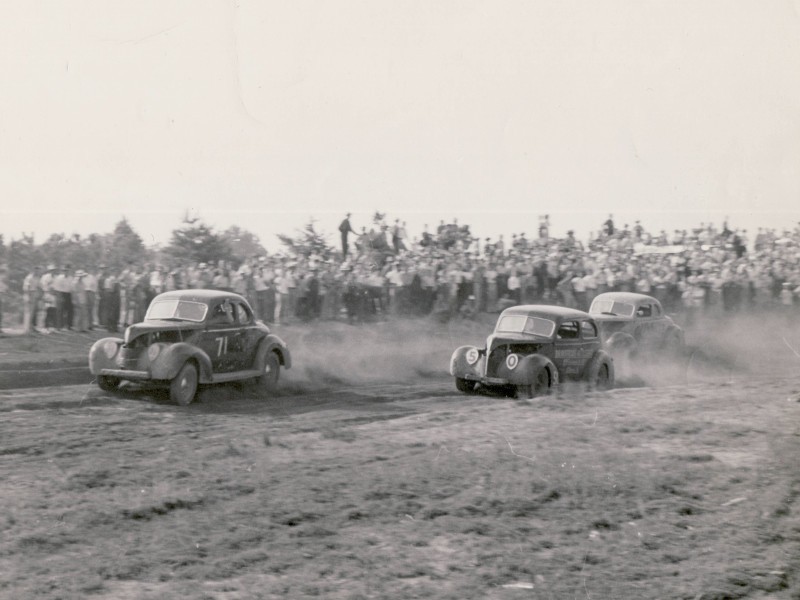
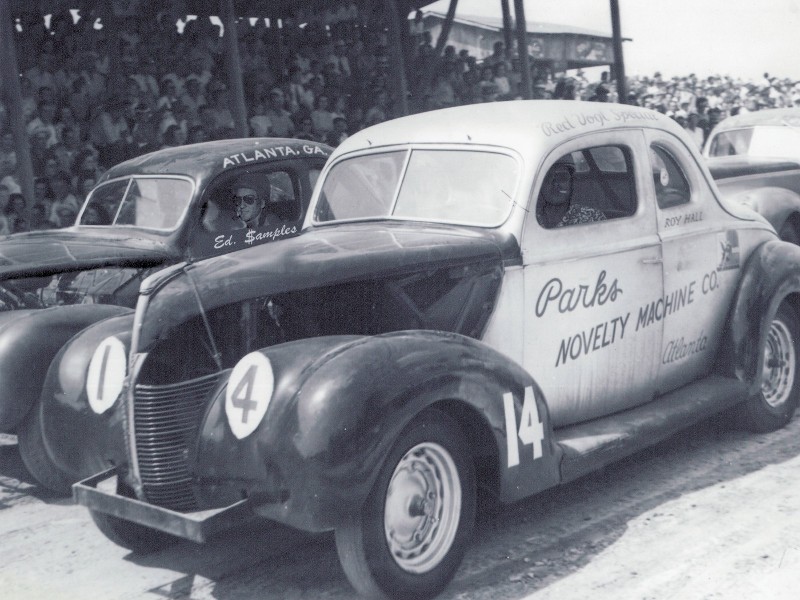

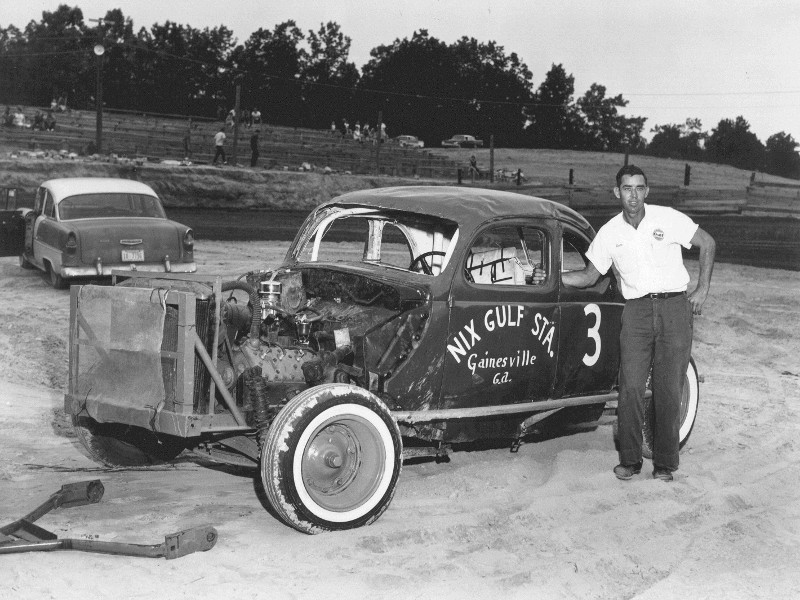
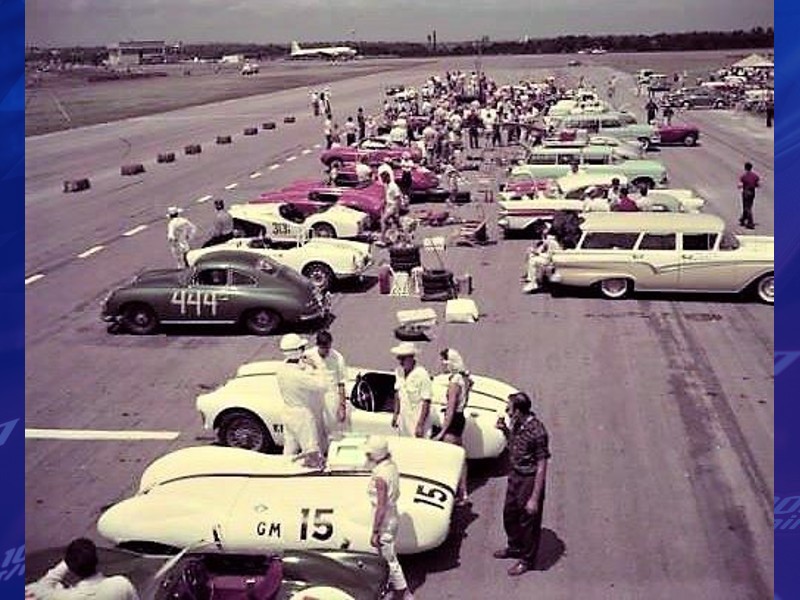
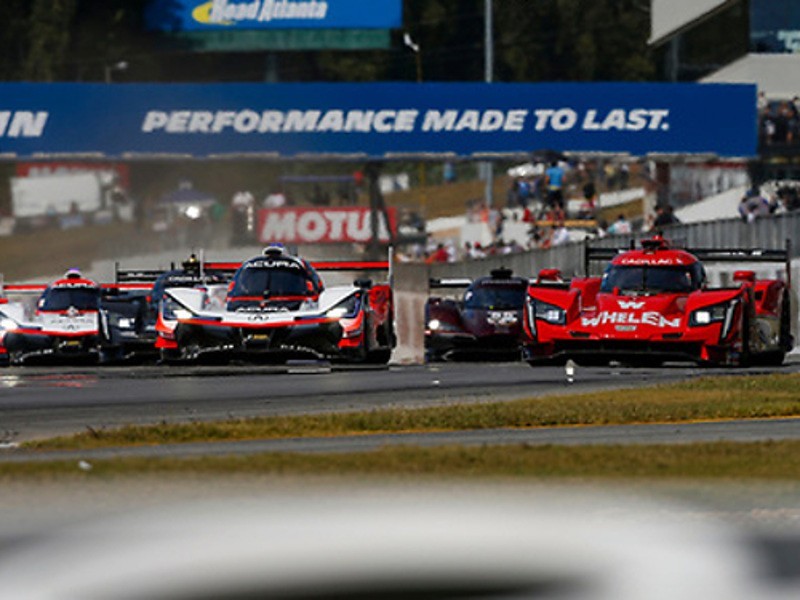
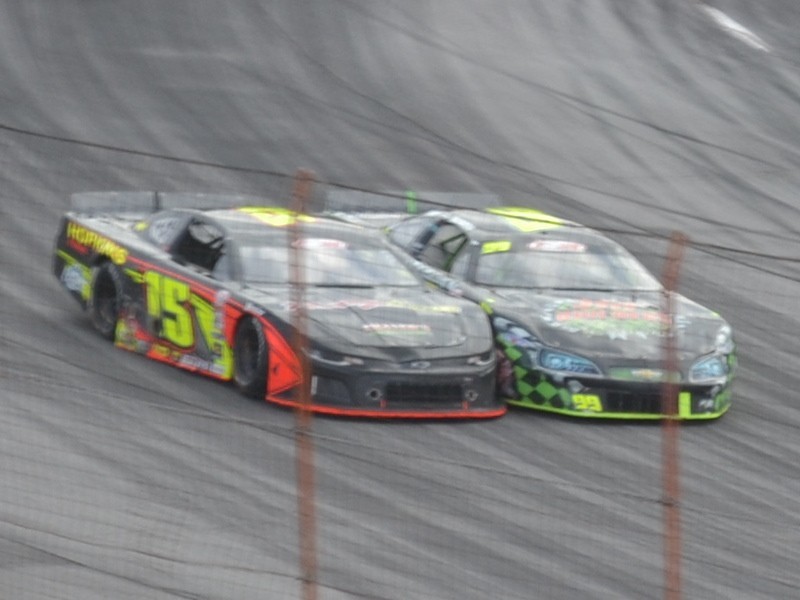
http://accesswdun.com/article/2020/5/902714/racing-roots-run-deep-in-hall-countys-red-clay
